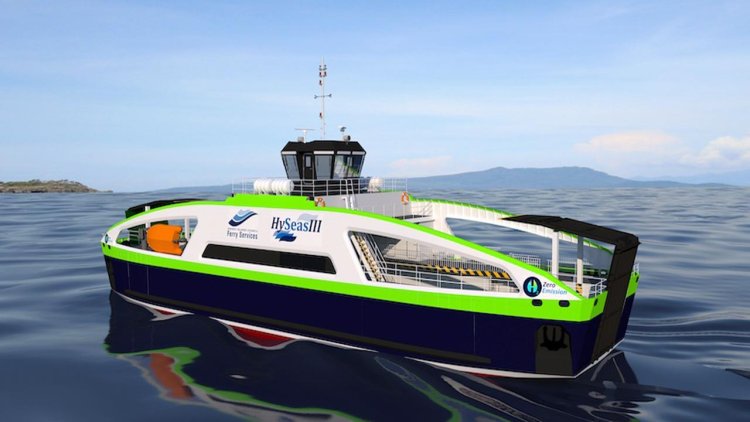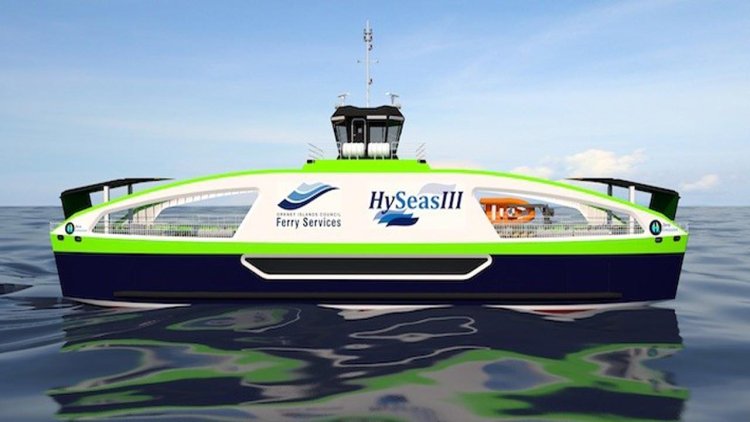First renderings reveal how Scottish hydrogen-powered ferry could look
The Scottish-led Hyseas III project aims to deliver Europe’s first seagoing ferry powered by hydrogen fuel cells.

A project to design and build a hydrogen-powered ferry has released the first images of what the craft is likely to look like.
The consortium aims to build Europe’s first sea-going ferry powered by hydrogen fuel cells. Hydrogen ferry designs to date have focussed on sheltered water routes.
The double-ended passenger and car ferry will have capacity for 120 passengers and 16 cars, or two lorries. It has been designed to operate between Kirkwall and Shapinsay in Orkney, where hydrogen is generated through wind power, although it will be capable of operating at other ports where hydrogen is available in future.
The EU-funded programme involves partners CMAL, St Andrew’s University, Orkney Islands Council and several European organisations. The consortium will next seek feasibility ‘approval in principle’ of the designs by AqualisBraemar LOC Group from the DNV Classification Society.
String testing is also underway in Bergen, Norway to demonstrate the complete fuel cell-battery-multidrive propulsion. The full-size string test mirrors the load requirements of the new ferry, and will confirm power and fuel capacity requirements. The results will provide valuable information, which will be fed back to the team to be incorporated into the design.
The partners aim for the design to be complete in March 2022.




























